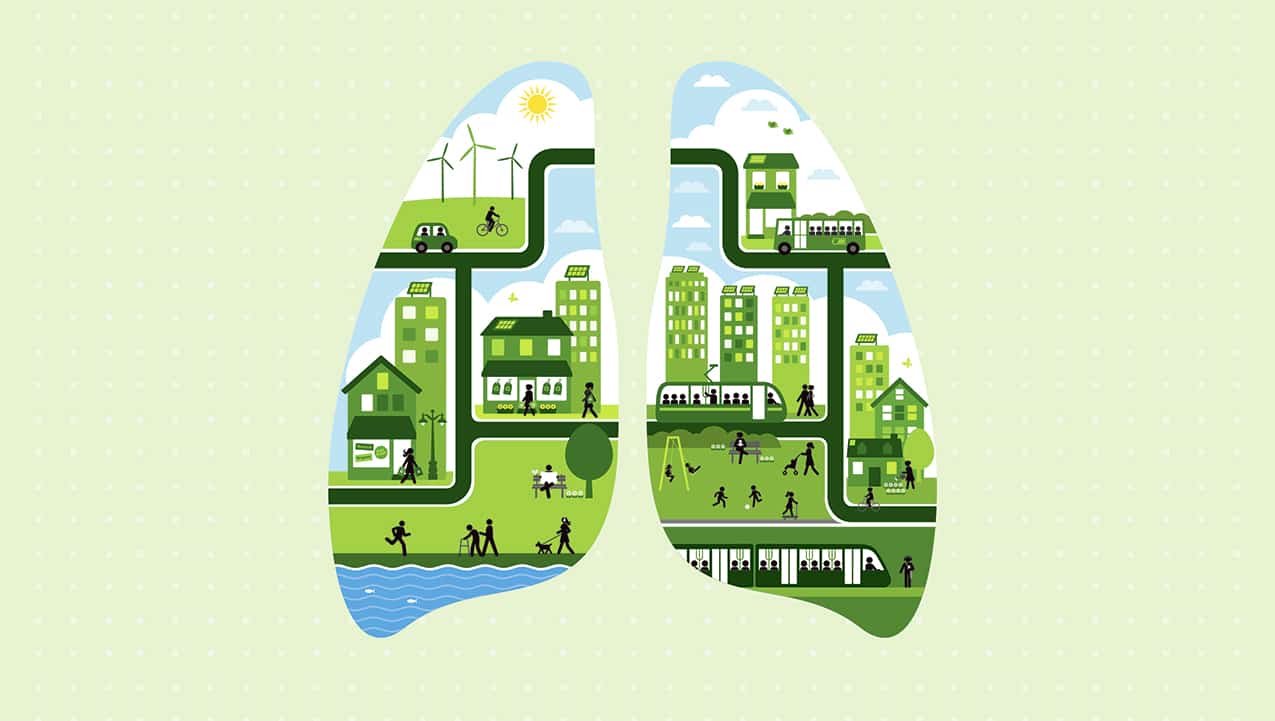
How can urban metabolism contribute to circular economy policies?
10 minutes of reading
Although cities occupy a mere 2% of the surface of the planet, they consume 75% of its resources, emit between 60% and 80% of anthropogenic greenhouse gases and generate 50% of waste . Cities are a privileged gateway for the entry and exit of a large concentration of flows (food, electricity, cold, heat, fuel, consumer goods, waste, etc.) that enable them to meet the needs of their users: remember that cities today account for 55% of the world population. The study of these flows according to the principles of urban metabolism is a field that is growing in popularity. More and more urban authorities are using it as a basis for defining their circular economy policies.

What is urban metabolism?
Urban metabolism is based on a metaphor that sees cities as bodies: to maintain their vital functions, they need to use materials and energy, which they consume, transform and then evacuate (in the form of molecules polluting the air or waste, for example). Urban metabolism is the study of these inward and outward flows and of stocks. It is based primarily on a quantitative assessment called Material Flow Analysis. The City of Paris’s study of urban metabolism, for instance, accurately quantifies flows of materials entering and leaving the city (goods, construction, waste, food), flows transported by the energy networks and local production of renewable and recovered energy, flows transported by the water networks and rain, and stocks of materials in buildings and networks. These figures demonstrate the impact of the construction sector on urban metabolism. In 2015, nearly 3 million tonnes of construction materials were imported into Paris, i.e. nearly half of the 6.2 million tonnes of goods imported into Paris in total (excluding fuels). And of the 2.6 million tonnes of waste that were exported from Paris, 1.9 million tonnes were construction waste.A flow analysis combining quantitative and qualitative elements
The purpose of an urban metabolism-based approach is to gain a better understanding of how a territory functions in order to better manage resources. This entails a qualitative approach to flows and stocks, which generally backs up the quantitative component: where do the flows transit, how is their management organised, what players and infrastructures are involved, etc.? After having carried out an initial diagnostic to quantify flows as part of the POPSU Métropoles research and action programme in 2019, the Lille European Metropolis launched a second study in 2021 covering the governance of the flows, specifically seeking to identify the ecosystems and value chains of players and agencies. Knowledge of these elements is of great help to public players in implementing action plans in areas as varied as food, construction materials and waste.How metabolism promotes the circular economy
The study of territorial metabolism is not an end in itself, but provides knowledge capable of informing public policies. Flow diagnostics can initially provide input for the strategic documents being drawn up or revised for a territory. This is the case of the approach taken by the Lille European Metropolis, which coincided with the development of its Regional Food Project. They can also guide regions in the framework of inter-regional cooperation agreements on resource management (water, food, etc.): which thematic areas can be prioritised to achieve complementarity with other regions (i.e. win-win stuations)? Finally, these diagnostics are a prerequisite for defining and implementing circular economy strategies at a territorial level. The challenge is to ensure that incoming and outgoing flows can circulate as widely as possible within a territorial system, without loss, and in a loop. In other words, the idea is to recreate relationships of proximity around the various materials. As an example, the diagnostic carried out as part of the Lille European Metropolis study revealed the weakness of local consumption of food in the Nord department, with an average supply distance of 500 km (excluding drinks). If only food imports are taken into account, excluding locally produced food, the average distance doubles to roughly 1,000 km. The urban metabolism project undertaken by Plaine Commune, an association of nine cities north of Paris, is also fully consistent with this approach, applying a circular economy strategy to the construction sector. In this perspective, the transformation of the territory is being achieved by reclaiming the materials already present locally as much as possible. For example, each material resulting from demolition represents a potential resource for future construction sites. On the site of line 15 of the Grand Paris Express, recovered soil is used to create construction materials; on the site of the Babcock wasteland in La Courneuve, recovered bricks were used to create the stonework for the landscape of the Ferme des Possibles, a 1.2 hectare urban agricultural farm. This type of approach is more specifically related to territorial ecology, one of the seven pillars of the circular economy defined by ADEME. The objective is to transform the metabolism of territories by imagining modes of organisation that allow the exchange of flows and the sharing of needs. [1] Circular Economy in Cities: Project Guide, Ellen MacArthur Foundation, ARUP, 2019More reading
Read also




What lies ahead? 7 megatrends and their influence on construction, real estate and urban development
Article
20 minutes of reading

